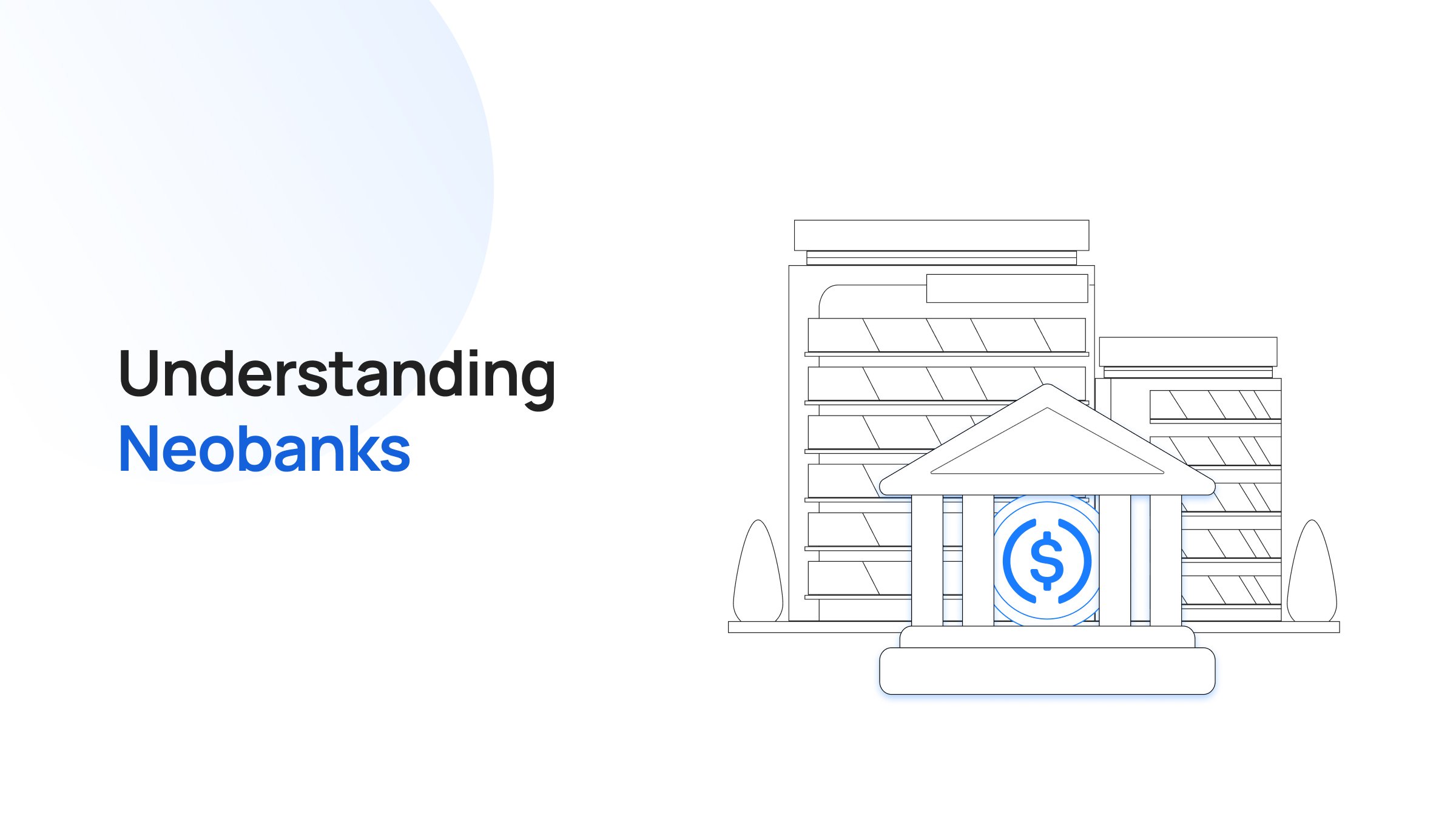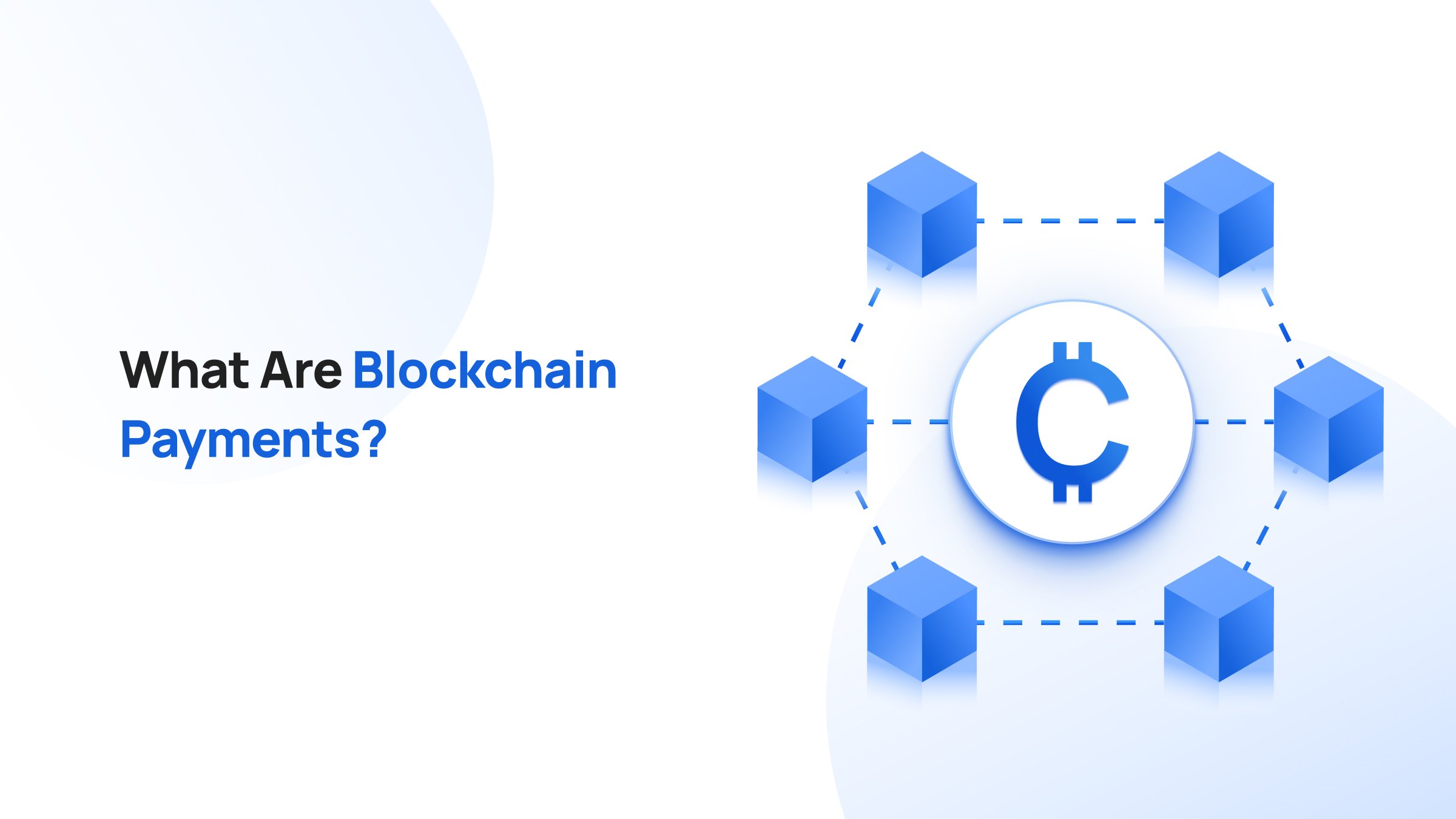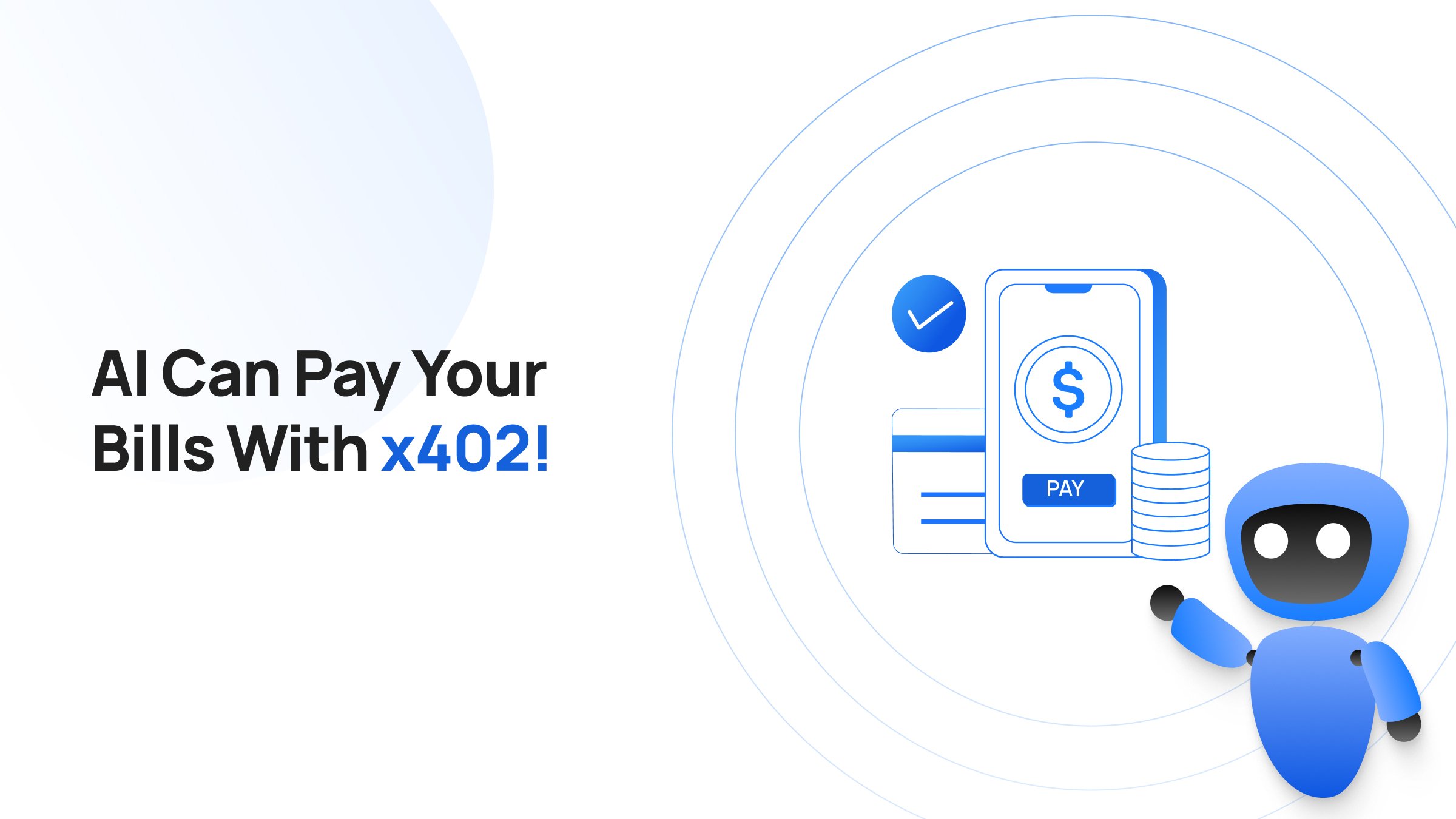.jpg)
Crypto airdrops are a marketing strategy in which projects freely distribute tokens, including NFTs, to users' wallet addresses as a promotional activity or a reward mechanism for the community.
The value of the top seven airdrops, including those distributed by Uniswap, Ape Coin, and Starknet, is over $21 billion (at the time of writing). The most interesting factor is that these top crypto airdrops successfully distributed their rewards to a combined total of over 3.3 million wallet addresses to date.
Moreover, according to CoinGecko research, 46% of the top fifty biggest airdrops recorded their all-time high price within two weeks of the crypto airdrop. This research data indicates the strong speculative interest and the potential for rapid value appreciation shortly after token distribution.
.jpg)
The demand for crypto airdrops is still rising, with projects distributing tokens worth over $4 billion as of mid-2024.
What Is A Crypto Airdrop?
Airdrops involve crypto projects sending tokens or coins to eligible users' wallets. To receive such tokens, users need to perform simple tasks like sharing with friends or owning a specific number of tokens based on the project's eligibility requirements.
Think of it like a surprise gift that magically appears in your digital wallet. It's a marketing strategy employed by blockchain startups to bootstrap their project and gain traction.
One popular example of a crypto airdrop is Binance's surprise airdrop that offered over 100 free NFTs to existing holders of the CR7 Forever Worldwide NFT collections.
Crypto airdrop announcements like these on social media platforms help to gain attention from the community and increase the engagement and loyalty of existing token holders.
How Do Crypto Airdrops Work?
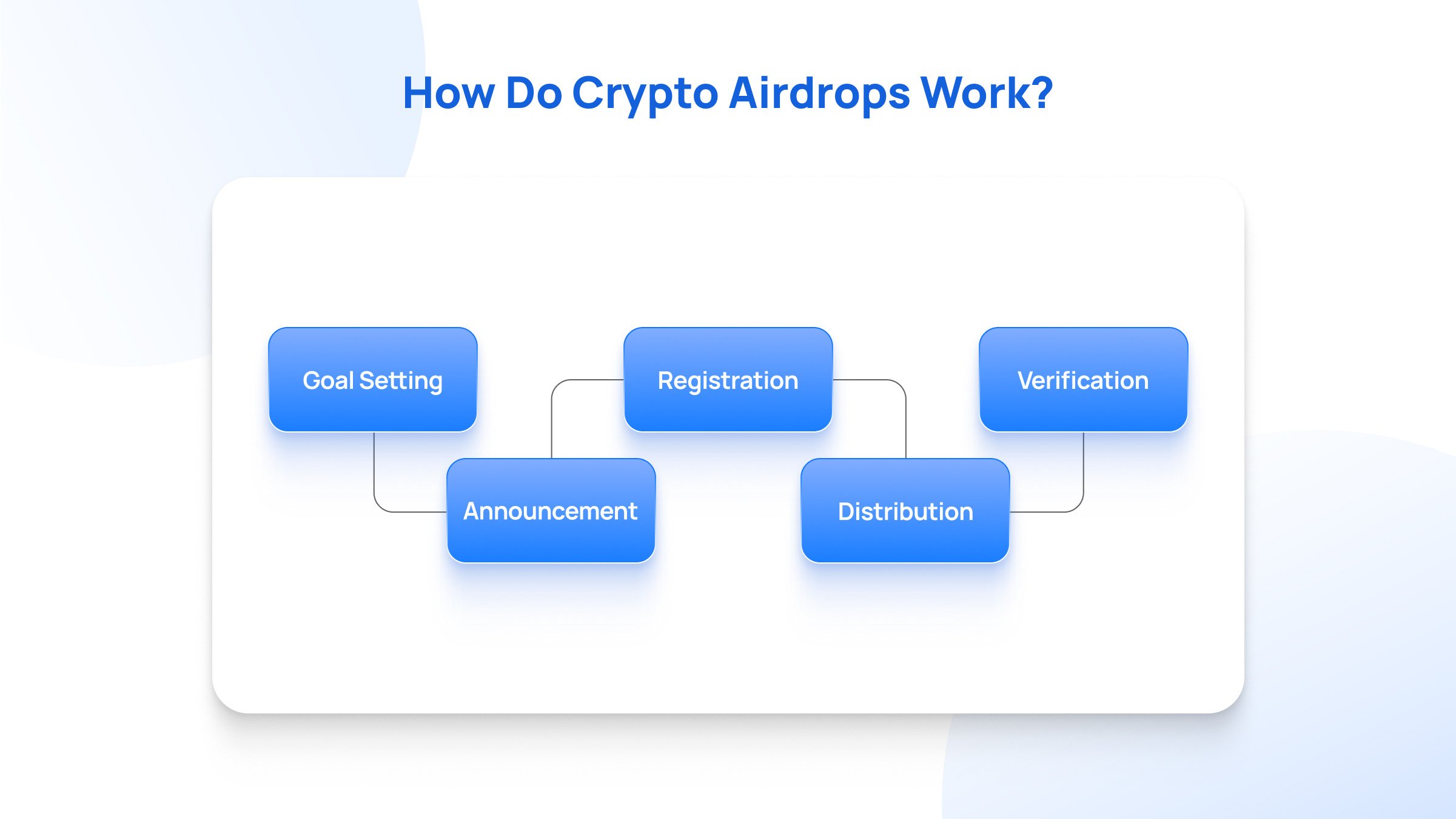
The execution of an airdrop campaign requires careful planning, execution, and follow-up to achieve its goals effectively. Here's a step-by-step breakdown of how these campaigns are typically executed.
Goal Setting
Before launching an airdrop, the project team needs to define clear objectives for the campaign. Common goals include:
- Raising awareness: Generating buzz around a new token or project.
- Rewarding early adopters: Giving tokens to early community members or testnet users.
- Building a community: Encouraging people to join the project's social media channels, Discord, or Telegram groups.
- Bootstrapping liquidity: Incentivizing users to provide liquidity or trade the token on decentralized exchanges (DEXs).
The project team decides on the total number of tokens to be airdropped and how they will be distributed. This process involves:
- Total token supply allocation: Deciding how much of the total supply will be used for the airdrop.
- Distribution size: Determining the number of tokens per eligible user based on participation, wallet balances, or other criteria.
- Incentive structure: For larger campaigns, projects may offer different reward tiers depending on how much a user contributes (e.g., early users or bigger contributors get more tokens).
Announcement
When a project’s team members decide to airdrop its tokens, they announce the details of the campaign on major social media platforms, their official websites or apps, and other related community forums.
This announcement explains the type of airdrop with potential rewards, multiple stages, if any, eligibility criteria, relevant dates, and more.
However, some projects will airdrop early adopters to capture the most loyal and legitimate users and/or developers instead of “airdrop farmers” who may immediately sell the tokens for a profit and devalue the project.
Common eligibility criteria for airdrops include:
- Holding specific tokens: Requiring users to hold a certain token (e.g., ETH, USDC, or project-native tokens) in their wallets.
- Platform participation: Users who have interacted with the project's decentralized applications (dApps), provided liquidity, or completed transactions.
- Community engagement: Requiring users to follow the project's social media accounts, retweet posts, or join a Telegram group.
- Snapshot date: Setting a date to "snapshot" user wallets to determine eligibility based on holdings or activity before a specific date.
Registration
After the announcement, eligible users can continue the registration process if they find the crypto airdrop interesting. Some airdrops don't ask users to register, like the ones that reward the token holders based on the project's tokenomics.
If the airdrop is based on user behavior (such as holding certain tokens or using the platform), the project will take a "snapshot" of eligible wallets at a particular date and time. This snapshot captures the status of user wallets and transactions before the distribution.
For blockchain projects, the snapshot usually refers to a specific block number on the blockchain that records wallet balances or activity.
Verification
The team behind the project's airdrop verifies the eligibility of the participants based on the criteria provided during the announcement process. This verification process is mandated to ensure the tokens are rewarded to genuinely eligible ones.
Distribution
The final step of the crypto airdrop involves distributing tokens to the selected wallet addresses. The number of tokens distributed per wallet address varies depending on the project's token distribution criteria.
The distribution methods can include:
- Manual distribution: Smaller airdrops may be distributed manually, with the project team sending tokens to users’ wallets.
- Automated smart contract: For larger, decentralized airdrops, the smart contract will automatically send tokens to eligible wallets based on predefined rules.
- Claiming mechanism: Some projects require users to claim their tokens via a web interface. This allows the project to reduce gas costs and avoid sending tokens to inactive wallets.
- Exchange-based airdrops: For projects that partner with exchanges, the tokens may be distributed directly into users' exchange wallets if they meet the criteria set by both the project and the exchange.
Why Do Projects Airdrop Cryptocurrency Tokens?
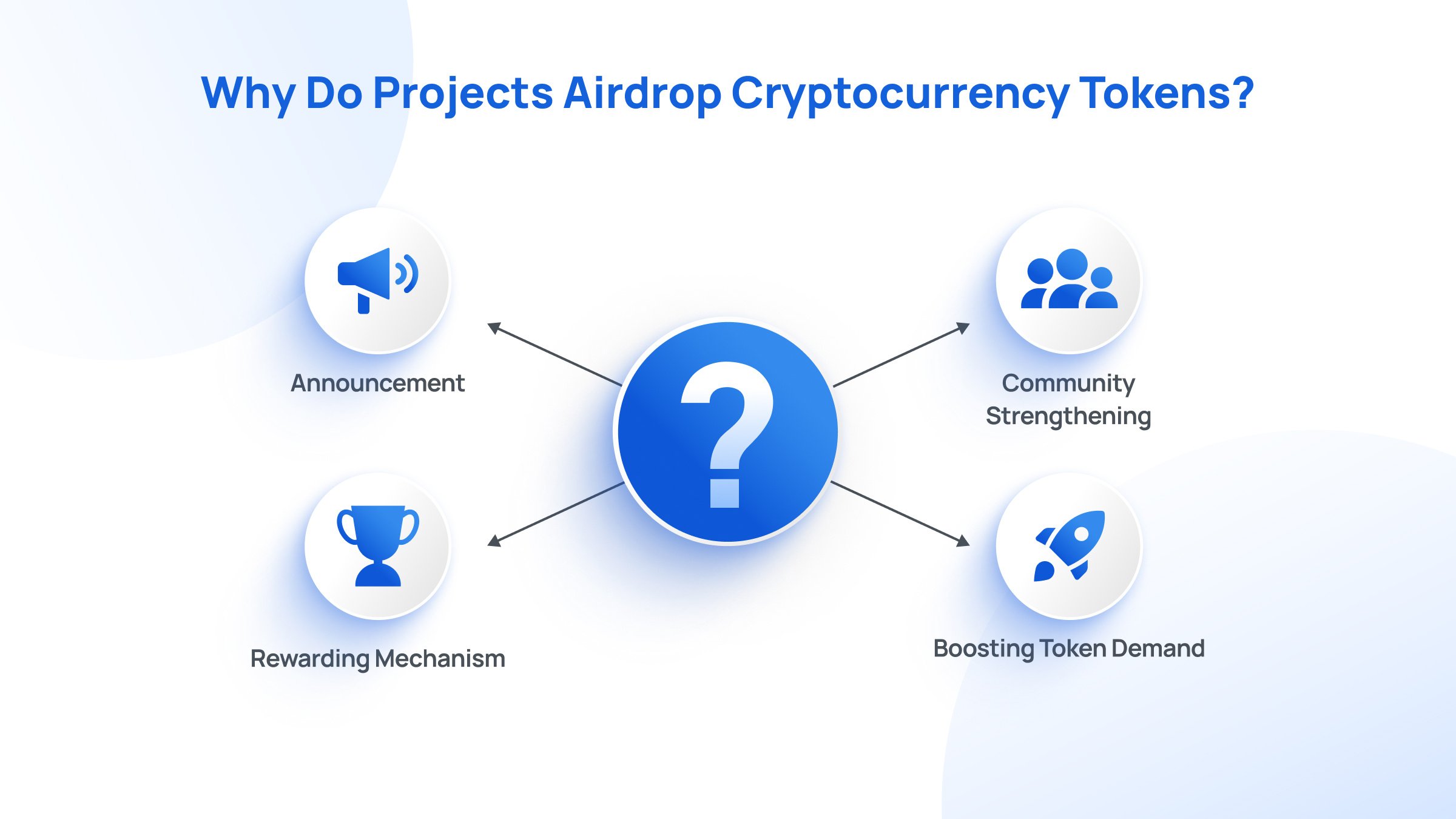
Airdropping tokens sounds like distributing free money. But why would anyone do that?
The fact is that airdrops are a very strategic move, especially in a bullish crypto market. Let’s look at a few motivations for projects airdropping their tokens:
- Marketing: Airdrops with marketing campaigns effectively generate hype and excitement among the crypto community. These campaigns play a crucial role in gaining the attention of new users, existing users, and potential investment opportunities.
- Community Strengthening: Rewarding existing members with tokens can help build a loyal community, which in turn can help the projects build more useful services. The existence of a strong community across major online platforms also helps build trust during new user onboarding.
- Rewarding Mechanism: Token holders, governance participants, stakers, investors, and the project team members are rewarded a portion of the total token supply as airdrops. This incentivization encourages the eligible stakeholders to continue engaging, supporting, participating in, and promoting the project and its ecosystem.
- Boosting Token Demand: Airdrops of genuine and valuable projects can stimulate activities such as trading, investing, staking, yield farming, and more. Increased user activity, including high-volume trading, can enhance token liquidity, potentially driving the token's value.
Types of Crypto Airdrops
There are different types of airdrops, including those based on:
- Holding certain tokens: You receive an airdrop because you hold a specific amount of another cryptocurrency.
- Specific criteria: You meet certain requirements set by the project.
- Random selection: You're randomly chosen to receive the airdrop.
Standard Airdrop
Standard airdrops are the basic form of airdrops, in which participants can receive free tokens with no task requirement in most cases. Here, the participants only need to provide a wallet address and complete a registration if asked.
The minimal requirement to receive free tokens makes this standard airdrop popular among participants. An ideal example of this crypto airdrop is Optimism Foundation's first airdrop, which distributed OP tokens to those who interacted with OP Mainnet in its initial stages.
Bounty Airdrop
Bounty airdrops are given to the participants for completing specific tasks announced by the project's eligibility criteria.
The type of task required to complete varies according to the project but mostly involves sharing on social media platforms, creating a new account, joining specific groups or channels, and referring friends, to name a few.
The main motive of such airdrops is to add a new user base to their platform or app and increase online engagement. For example, OneRare Foodverse conducted 10,000 NFT airdrops worth $75,000, in which the participants were required to complete nine tasks, such as joining the Telegram channel and following Instagram, to receive the bounty airdrop, which was limited to 2,000 winners.
Holder Airdrop
Holder airdrops are transferred to the wallet addresses of participants who hold a minimum of the required tokens, as mentioned by the projects. This type of holder airdrop is passive, as the token holder doesn't need to be involved in completing any tasks.
These types of airdrops reward the holders based on the number of tokens to measure their commitment to the project and its associated tokens.
In June 2024, Binance announced its HODLer Airdrops that rewards BNB token holders who have subscribed to its Simple Earn products to promote its services, which include flexible crypto deposits.
Exclusive Airdrop
Exclusive airdrops are offered to a limited group of people, such as early users or key supporters of a successful project. These airdrops signify the project's gratitude towards those whose contributions and engagement were crucial for the project's growth and success.
The good part about exclusive airdrop is that participants don't need to hold tokens, complete tasks, or even register, as the project's team members pick these addresses based on their initial activities. For example, Uniswap airdropped 400 UNI tokens to its initial users as a token of appreciation for their early commitment to the project.
Advantages of Crypto Airdrops
Users can benefit from crypto airdrops in the following ways:
- Free Tokens: Legitimate projects that offer airdrops are an easy way to acquire crypto tokens, especially for new users who want to get exposure to the world of crypto assets, wallets, and exchanges. Holding tokens of projects with future potential can also help users gain price appreciation with zero investment.
- Early Access: This option allows users to participate at the earliest stages of a project, allowing them to contribute to activities like promotion and platform engagement. Early participants of successful crypto projects might also receive more airdrops in the future.
- Learning Opportunity: Beginners in the crypto space can use the airdropped tokens to test various dApps. This experience allows the token holders to experiment with activities, including staking, yield farming, lending, swapping, and more.
- Community Involvement: Following the airdrop participation, users get a chance to be involved with other project participants through social media platforms and forums. This community interaction helps users to know more about the project's progress, mission, roadmaps, and others to become strong community members.
Notable Crypto Airdrops
Uniswap
Uniswap, launched in 2018, is the largest decentralized exchange (DEX), with an all-time trading volume exceeding $2.2 trillion. In September 2020, Uniswap airdropped 400 UNI tokens across 250K wallet addresses for interaction with their platform before September 01, 2020.
According to Dune's analysis, 90.8% of the wallet holders sold UNI tokens within a month of crypto airdrop.
Ethereum Name Service (ENS)
ENS is a decentralized naming system that allows users to own easily readable names like John. eth stores Ethereum addresses, metadata, and others with a minimum one-year registration. On October 31, 2021, users with ENS names are eligible for free ENS airdrop tokens.
Following the ENS airdrop, over 102K wallet addresses claimed the tokens to date, constituting around 75% of the token distribution.
Arbitrum
Arbitrum is a major Ethereum layer-2 scaling solution with a total value locked (TVL) of over $2.5 billion as of September 2024. The qualifying actions for this airdrop involved scoring points by bridging funds and conducting high-value and large-number transactions.
This airdrop conducted in March 2023 involved the distribution of around 11.6% of the token's total supply, amounting to 1.162 billion ARB tokens to eligible wallet addresses.
What Are NFT Airdrops?
NFT airdrops are a marketing strategy where Non-Fungible Tokens (NFTs) are distributed for free to users by blockchain projects, artists, or platforms. NFTs are unique digital assets that can represent ownership of a wide variety of digital content, such as artwork, music, in-game items, virtual land, and more, each having its own specific characteristics and metadata.
NFT airdrops have become a popular way for projects to increase engagement, reward loyal users, promote new collections, or onboard new users into their ecosystem. While similar to traditional cryptocurrency airdrops, NFT airdrops differ in the type of asset being distributed and the objectives behind the campaign.
NFT airdrops distribute unique, indivisible assets. Each NFT is distinct in terms of its metadata, meaning that no two NFTs are alike. They can represent digital art, in-game items, or real-world assets.
Bored Ape Yacht Club (BAYC) – Mutant Ape Airdrop
%20%E2%80%93%20Mutant%20Ape%20Airdrop.jpg)
The Bored Ape Yacht Club (BAYC), one of the most successful NFT collections, conducted an airdrop of Mutant Serums to all holders of BAYC NFTs. Holders could use these serums to create a corresponding Mutant Ape NFT.
Each BAYC holder received one of three different types of Mutant Serums (M1, M2, or M3) based on rarity, which could be "used" to mutate their original Bored Ape into a Mutant Ape. The Mutant Apes became a separate NFT collection, with high demand in the secondary market.
This airdrop further enhanced BAYC's value proposition, giving existing holders a new, rare NFT for free. The Mutant Ape NFTs became highly valuable and contributed to the club's exclusive appeal. The airdrop helped BAYC holders profit from both their original Bored Apes and the new Mutant Apes they created using the serums.
How Transak Fixes Airdrop Distribution For Projects
Airdrops are a popular way for crypto projects to distribute tokens and gain early users. However, they often face a significant hurdle: ensuring tokens go to real, unique individuals.
- Bot Manipulation: Airdrops can be vulnerable to bots that create multiple wallets to claim a disproportionate amount of tokens. This dilutes the distribution and defeats the purpose of rewarding genuine users.
- Sybil Attacks: Similar to bot manipulation, individuals can create multiple identities to claim more tokens than intended.
Transak, by integrating with Privado ID, offers a "Proof of Uniqueness" that addresses these issues.
Here's how it works:
- KYC verification: Users participating in an airdrop that uses Transak's system go through a KYC (Know Your Customer) process. This involves verifying their identity with official documents.
- Decentralized identity: Privado's technology creates a decentralized and secure digital identity for the user, ensuring their data privacy.
- One person, one identity: This system makes it extremely difficult for users to create multiple fake identities, as each KYC verification is tied to a unique individual.
As a result Projects can be confident that their tokens are distributed to real people, not bots or fake accounts. This allows for a fairer and more effective airdrop so that genuine participants foster a stronger and more engaged community around the project.
Conclusion
Airdrops have become one of the major marketing tactics used, especially by crypto startups, to gain online attention and build their community from scratch. They are also a popular way for projects to distribute their tokens and incentivize early adoption.
While crypto airdrops are the easiest way to obtain free crypto tokens or coins, potential scams exist. Therefore, to ensure the safety of your crypto portfolio, it's best to create separate wallets to take advantage of airdrops.
FAQs
Is crypto airdrop profitable?
Airdrops are profitable as there's (usually) no cost for participation other than time. However, if the value of the total tokens received is minimal, they can be less profitable.
So, if you are wondering “are airdrops worth it?” the simple answer is that most airdrops do not amount to much and are not worth it but if you are out about finding good opportunities, then one good airdrop catch can more than make up for all the effort you put in for other airdrops.
How do I get crypto airdrops?
Depending on the project's requirements, you can get crypto airdrops on your wallet address by registering, completing small tasks, referring your friends, sharing on social media platforms, etc.
Are crypto airdrops safe?
The safety of the crypto airdrops mainly depends on the legitimacy of the project behind such programs. Participating in scam airdrops and providing private wallet details can result in the loss of crypto assets.
How are airdrops taxed?
Crypto airdrops are typically taxed as income based on their fair market value when you receive them. If you later sell or trade the airdropped tokens, you may also incur capital gains taxes on any profits. However, this is not an answer fit for all regions and people — please consult a professional tax advisor before taking action.
What is airdrop farming?
Airdrop farming (also known as “airdrop hunting”) is when you strategically look for and interact with multiple crypto projects (often using multiple wallets) to maximize your chances of receiving airdropped tokens. It can be as simple as joining a Discord server or as complex as providing liquidity to a decentralized exchange.


